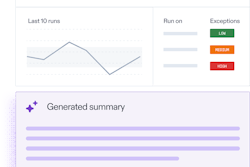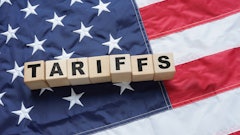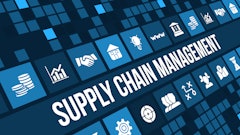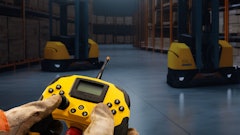
In today's fast-paced manufacturing world, supply chains are more complex than ever. Companies struggle with the dual challenge of preventing inventory shortages while also avoiding excess stock, a balancing act that can significantly impact their bottom line. For decades, manufacturers have relied on traditional software and manual processes, but a new wave of technology is changing the game: AI-powered optimization platforms.
These next-generation solutions are not just about collecting data; they're about transforming it into actionable, intelligent decisions. They bridge the critical gap between strategic supply planning and the practical, day-to-day execution on the factory floor. This allows manufacturers to move beyond simply reacting to problems and instead proactively identify and implement optimal strategies.
The ERP dilemma: Strategy vs. execution
The challenge often isn't a poor strategy but a poor execution of a good one. A critical hurdle many companies face is a lack of trust in their existing enterprise resource planning (ERP) systems. When supply chain teams don't believe the system's recommendations will work, they resort to manual adjustments. While some outliers will always require human intervention, a well-defined plan for every part (PFEP) should enable the ERP to respond seamlessly to typical variability.
When manual overrides become the norm, the ERP devolves from a powerful material management system into an expensive and cumbersome manual purchasing tool. Common decisions, like refusing to re-time a past-due order, force the ERP to generate unrealistic recommendations, further eroding trust. This creates a difficult cycle to break: once you start routinely overriding the system, it's hard to stop.
Naysayers often point to examples where the ERP's recommendations are incorrect, but these are often due to external factors not captured in the system, such as informal supply agreements. These situations should be treated as exceptions, not as proof that the entire strategy is flawed.
To move forward, it is essential to define order policies and strategic inventory levels that the team can trust. Establishing this trust often requires a temporary investment to widen safety nets, allowing the team to observe the ERP's performance without constant "hand holding." Many companies never reach this goal because their initial PFEP strategy might recommend additional investments in inventory, discouraging teams focused on reduction. Management must be prepared to "take one step back to take two steps forward." If a business convinces itself that its operations are too unique to automate materials management, it will put itself at a distinct disadvantage to competitors who dedicate the time and effort to develop the required logic.
Beyond basic analytics: AI as a supply chain partner
This is where AI platforms are making a difference. They address the very issues that degrade trust in ERPs. Modern AI platforms use "Agentic AI" to act as a virtual assistant, providing a layer of "expert execution" that helps human teams make better, faster decisions. They are designed to manage manufacturing data and supply chain expertise, enabling optimized decisions that drive measurable results. This means executing with peak intelligence, precision, and domain knowledge to transform manufacturing complexity into a competitive advantage.
Think of it this way: instead of just showing you a report on what parts are running low, an advanced AI can analyze production schedules, supplier lead times, and historical data to prioritize critical shortages and even suggest specific actions to mitigate risks. This capability moves the needle from "nice to have" to "must have" for companies looking to gain a competitive edge.
This innovation fills a critical gap between strategic planning and operational execution that many legacy solutions overlook. By integrating a "factory-first" approach, these AI platforms are purpose-built for manufacturing, understanding the unique context of shop-floor operations and data.
A focus on measurable impact
What truly sets these platforms apart is their focus on delivering measurable financial impact. By intelligently optimizing inventory and procurement workflows, they can turn what were once cost centers into profit drivers. Early adopters are seeing significant returns on their investment, with quantifiable improvements in key metrics.
For example, a typical outcome includes a notable reduction in inventory levels, a decrease in shortages, and an improvement in on-time delivery rates. According to LeanDNA’s customer impact data, clients achieve an average inventory reduction of 14% in the first year, 32% fewer shortages, and an 18% improvement in on-time delivery. Real-world case studies demonstrate this, with one aerospace manufacturer reducing its working capital by $80 million and a medical device company achieving a 97% on-time delivery rate. These measurable results are achieved not through expensive consultants or unsustainable efforts, but by using the platform’s built-in, AI-powered logic. This enables supply chain teams to execute with peak intelligence and precision, turning manufacturing complexity into a competitive advantage. These results are often delivered in a relatively short timeframe, with a proven return on investment in under a year.
As the industry continues to evolve, the distinction between a software company and a solution provider becomes clearer. The most effective platforms are those that package their capabilities around the customer's needs, articulating the benefits and outcomes that can be achieved. By focusing on AI-powered optimization, these new platforms are actively shaping the future of materials planning and procurement, providing manufacturers with the intelligence and precision needed to transform complexity into a competitive advantage. This is a legitimate existential threat for companies that believe their operations are too specialized for automation. Ultimately, the ability to define a PFEP strategy you can trust is the first step to unlocking the full power of your ERP and future automation opportunities.

















![Pros To Know 2026 [color]](https://img.sdcexec.com/mindful/acbm/workspaces/default/uploads/2025/08/prostoknow-2026-color.mduFvhpgMk.png?ar=16%3A9&auto=format%2Ccompress&bg=fff&fill-color=fff&fit=fill&h=135&q=70&w=240)

